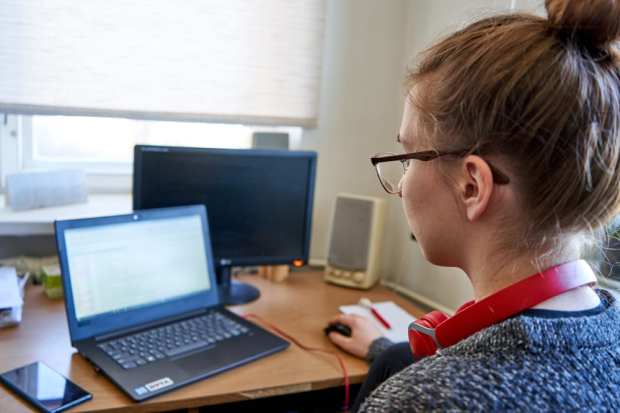US Laptop Shortage Could Derail Remote Learning

As students and teachers prepare for a return to in-person learning for at least some of the time this fall, many of the nation’s schools are facing shortages and delays for laptops and tablets needed for online learning, an Associated Press investigation revealed.
Lenovo, HP and Dell, the nation’s largest computer companies, have informed school districts that they are short nearly five million laptops.
AP interviewed more than two dozen schools and districts in 15 states, as well as computer companies, industry analysts and school administrators, who said the shortages add yet another headache for school communities.
Among them was Thomas Baumgarten, superintendent of the Morongo Unified School District in California, where 8,000 students need computers for distance learning. “This is going to be like asking an artist to paint a picture without paint,” he told AP. “You can’t have a kid do distance learning without a computer.”
When he ordered 5,000 Lenovo Chromebooks last month, a vendor called to say the laptops can’t be manufactured due to a government agency that has prohibited a part made in China from being shipped to the U.S.
Instead, Baumgarten placed an order with HP and was told the laptops would arrive on Aug. 26, the first day of school. But the delivery date was put off to September and then October, he told AP. The district has only 4,000 laptops on hand, which means the other 4,000 may have to go without one for the time being.
Last month, at the request of President Donald Trump, the U.S. Department of Commerce imposed sanctions on 11 Chinese companies, including Lenovo, AP reported. School administrators have asked the Trump administration to devise a solution because remote learning without laptops is impossible.
Lenovo has informed school districts of the supply chain delays and the trade controls set by the Commerce Department, which would cause another slowdown. Lenovo declined to respond to an inquiry from AP.
The timing couldn’t come at a worse time. The retail industry has been counting on back-to-school sales to help the sector rebound from the COVID-19 shutdowns. Its trade group, the National Retail Federation (NRF), forecast that parents with children in K-12 schools will spend an average of $789, beating the record set last year of $697. Spending is expected to increase by nearly 31 percent to $33.9 billion, from $26.2 billion in 2019.
